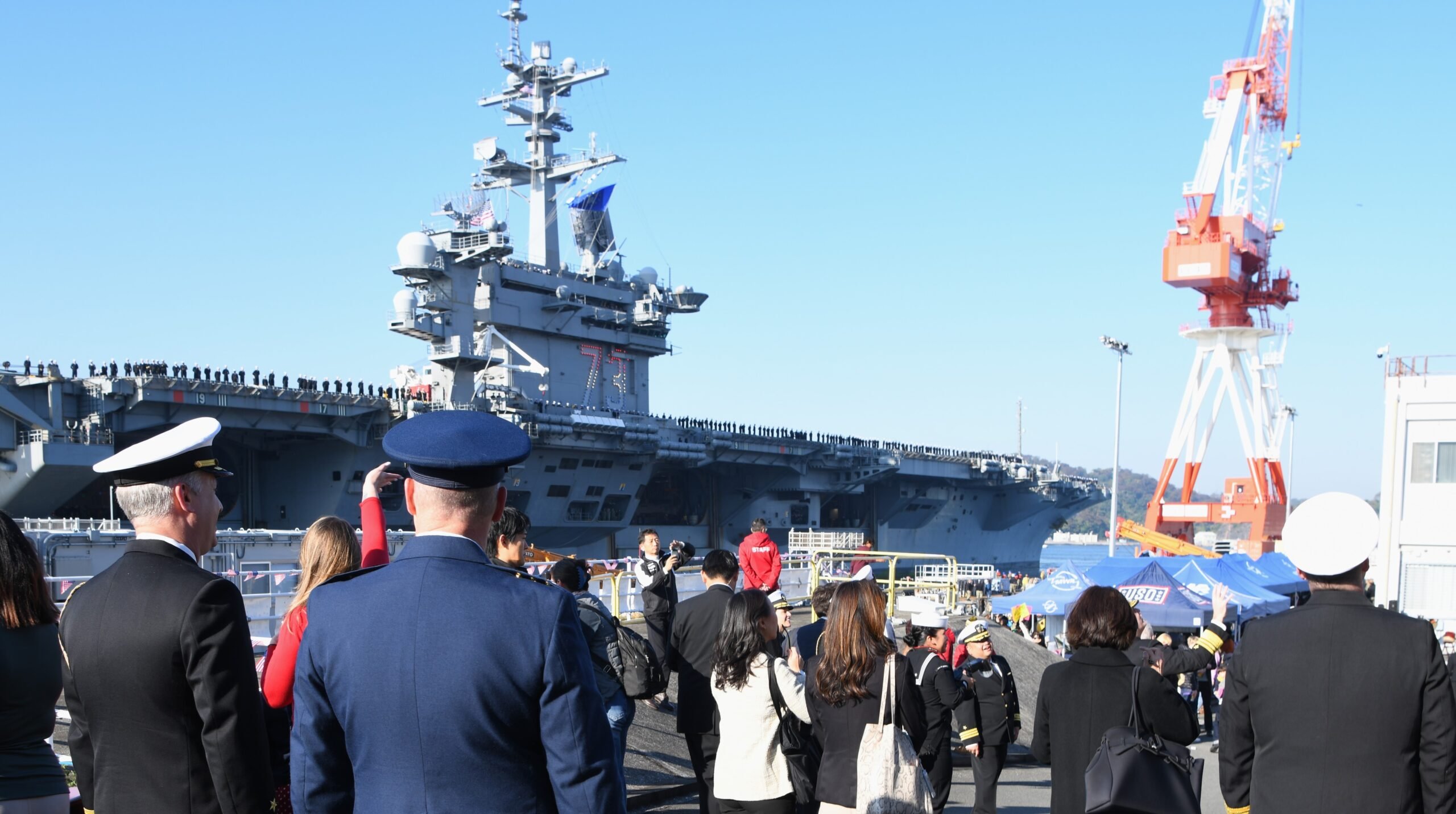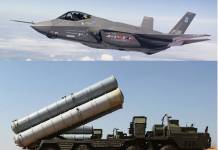The USS Abraham Lincoln (CVN 72), a Nimitz-class aircraft carrier, docked at Port Klang, Malaysia, on November 23, marking its first visit to this Southeast Asia nation in over a decade.
This “historic” stop is also the first time a US aircraft carrier has visited Malaysia since 2012, reinforcing the long-standing military and diplomatic ties between Washington and Kuala Lumpur.
The US Navy’s Abraham Lincoln Carrier Strike Group Public Affairs said the visit is a testament to the deepening partnership between the two countries, “rooted in close people-to-people, economic, and security ties.”
Before arriving in Port Klang, the carrier hosted a group of Malaysian officials and media for a tour of the ship. During the visit, the delegation observed flight operations and interacted with US Navy personnel. The ship’s stay in Malaysia will also include exclusive tours for senior Malaysian government leaders.
US Ambassador to Malaysia Edgard D. Kagan said, “This historic visit reaffirms Malaysia’s importance to the United States. It highlights our shared commitment to regional stability and Malaysian sovereignty, providing an invaluable opportunity for collaboration between our navies and key leaders.”

The visit marks the second time the USS Abraham Lincoln has visited Malaysia, with its first stop in 2010.
This time, the aircraft carrier’s arrival also captured widespread coverage in Malaysian media, which enthusiastically highlighted its fame from its appearance in the 2022 Hollywood blockbuster “Top Gun: Maverick,” starring Tom Cruise.
The Abraham Lincoln is currently operating in the US 7th Fleet’s area of operations, the largest forward-deployed fleet of the US Navy, which regularly interacts with allies and partners in efforts to maintain a free and open Indo-Pacific region.
Meanwhile, upon its arrival in Port Klang, the USS Abraham Lincoln was formally welcomed at the Port Klang Cruise Terminal by Rear Admiral Mohd Adzam Omar of the Royal Malaysian Navy, along with officials from Malaysia’s Naval Headquarters and National Hydrographic Centre. US Defence Attaché to Malaysia, Captain Pasit Somboonpakron, also attended the welcoming ceremony.
The USS Abraham Lincoln is scheduled to remain in Malaysia until November 27. Captain Pete Riebe, the carrier’s commanding officer, thanked the Malaysian people for their warm reception and expressed the crew’s eagerness to engage with the local community, explore Malaysia’s cultural heritage, and host additional tours for key Malaysian officials during their stay.
Three US Aircraft Carriers Strengthen Presence in Indo-Pacific
The US Navy’s presence in the Indo-Pacific has been reinforced by the deployment of three aircraft carriers, including the USS Abraham Lincoln (CVN 72), alongside the USS Carl Vinson and USS George Washington.
This concentration of naval power underscores the US’s strategic commitment to the region, particularly in light of rising tensions with China. The USS George Washington, having returned to Yokosuka naval base in Japan on November 22, represents its second stint as a forward-deployed aircraft carrier in the area.
The ship made history in 2008 as the first nuclear-powered carrier to be stationed in Japan. It held this position until 2015 when it was replaced by the USS Ronald Reagan (CVN-76).
After completing an extensive midlife refueling and overhaul, which took nearly six years instead of the planned four due to steam turbine issues and other setbacks, the George Washington is now equipped with upgraded technologies.
This modernization bolsters its strategic importance, improves its ability to deter threats, and contributes to the security of Japan and the broader Western Pacific region.

“A US carrier represents the most advanced maritime capability we have, and it’s the most advanced investment we can make in the security of Japan and of the Western Pacific,” said Vice Adm. Fred Kacher, Commander, US 7th Fleet. “George Washington returns with modernized, cutting-edge technology that represents our investment in deterrence and security in this region.”
Meanwhile, USS Carl Vinson departed from San Diego on November 18 for a scheduled Indo-Pacific deployment. According to the US Naval Institute’s USNI News, referencing a Navy spokesperson, the aircraft carrier carried out routine operations in the Eastern Pacific.
Before this, the Vinson participated in the Rim of the Pacific (RIMPAC) 2024 exercise off Hawaii. Although its deployment timeline is unclear, its return to the Indo-Pacific is an important development for the security of this region.
The deployment of these carriers signals the end of the “carrier gap” that existed in the Western Pacific during the summer months when no US aircraft carriers were available for immediate operations in the region.
This absence coincided with increased military activities from China. During this period, both the George Washington and USS Ronald Reagan were in California for a role swap, while other US carriers were repositioned to the Middle East in response to rising tensions there.
Chinese And Russian Naval Activities in The Region
Meanwhile, two Chinese aircraft carriers were observed operating in waters near northeastern China last week. Among them was the nation’s latest carrier, Fujian, which was undergoing another phase of sea trials.
In addition to the naval activities of the United States and China, Russia has also made its presence felt in the region. On November 25, Russia announced that its diesel-electric submarine Ufa conducted a Passage Exercise (PASSEX) with vessels of the Malaysian Navy in the South China Sea.
According to the Russian Pacific Fleet’s press service, the Ufa, accompanied by the Alatau rescue tug, completed a port call at Kota Kinabalu, Malaysia, before engaging in joint exercises. This was the first time Russian Navy ships had docked at Kota Kinabalu.
The drills included coordinated maneuvering, communication training, and other cooperative operational scenarios to enhance interaction between the two countries’ naval forces.
The visit also fostered diplomatic and cultural exchanges. Russian sailors participated in meetings with senior Malaysian naval officials, played friendly volleyball matches, and explored local attractions.
The simultaneous presence of American and Russian naval forces in Malaysia highlights the region’s growing importance, with major powers seeking to deepen ties and project influence in Southeast Asia.
- Contact the author at ashishmichel(at)gmail.com
- Follow EurAsian Times on Google News




